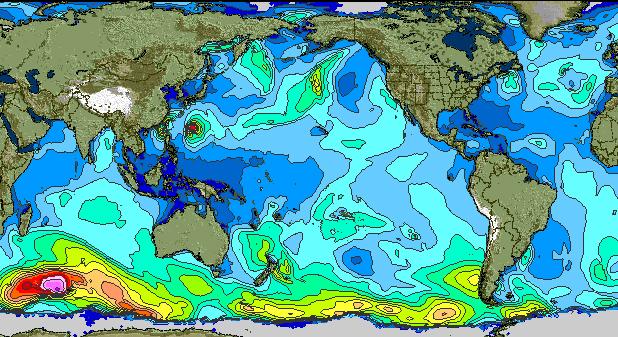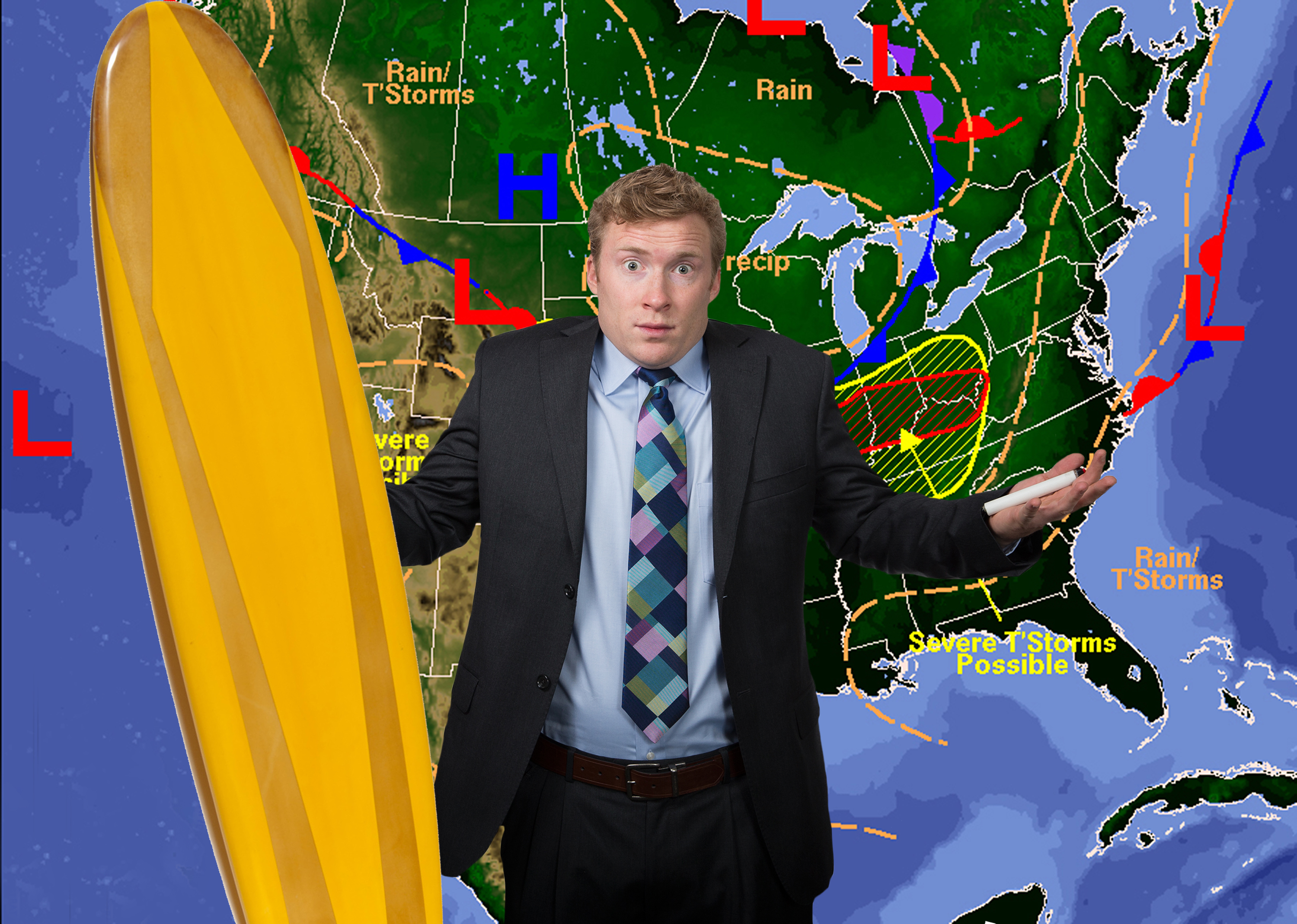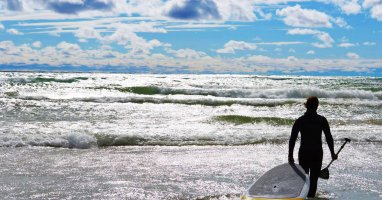Given the pop culture stereotype of the “surfer dude” as perpetuated by the likes of Jeff Spicoli and Bodhi, non-surfers might be forgiven for assuming that surfers comprehend very little outside of scoring some “tasty waves” and “a cool buzz.” I guess when you get right down to it, the assumption is partly true. In terms of motivating factors, very few things get a surfer’s blood pumping like the anticipation of a good swell. One look at the amalgamation of influential factors that go into defining a ‘good swell,’ however, and the notion that surfers are merely wandering beach bums who happen into decent waves from time to time goes out the window.
In my experience, surfers are among the most meteorologically and oceanographically informed people on the planet. Sure, there are plenty of times where we head to the beach without checking the forecast or conditions and luck into good surf. But for most surfers, especially those who do not have the good fortune of living within walking distance of the beach, a solid knowledge of local wave and weather patterns is crucial to squeezing the most out of each and every trip to the beach. While live webcams strategically positioned at popular surf spots certainly have helped inland surfers and weekend warriors in determining whether or not loading up their wetsuit and surfboard bag is worth the effort, having a semi-scientific understanding of surf forecasting is something that separates recreational surfers from true watermen (and women).

Taking a quick look back at the history of surf forecasting, it’s amazing to see how far things have come. From ancient rituals and appeasement of various gods by early Polynesian cultures, to rudimentary isobaric chart readings and the SMB method developed during the 1950s, all the way to the accessibility of information via the internet and the subsequent rise of surf forecasting services like Wavetrak and Surfline. Today, websites like surfline.com and magicseaweed.com place countless wave forecasting tools, charts, and graphs at the fingertips of every surfer, creating an army of pseudo-informed wave riders. The missing piece among the plethora of colorful, easy-to-understand chunks of surf condition data is the nuanced tidbits of knowledge that can only come from time spent studying and surfing a given spot.
The truth is that even with the advancements in surf forecasting technology, surfers must still possess an understanding of how a certain combination of conditions will affect their particular surf break. They must be able to interpret the subtle differences between a four foot southwest swell hitting their local beach break and arriving at the left point just a few hundred yards up the coast. They need to know the optimal tide level, as well as the direction, angle, and period of swell for the spots they surf. They need to stay informed of changing weather conditions, off-shore storm cell formations, and wind direction and speed. In short, a surfer needs to be part meteorologist, part oceanographer, and part techie in order to have a complete and proper understanding of wave conditions today.
The next time you are curious as to what the weather might be like at the beach this weekend, try asking a surfer. You are likely to get much more information then you bargained for.








